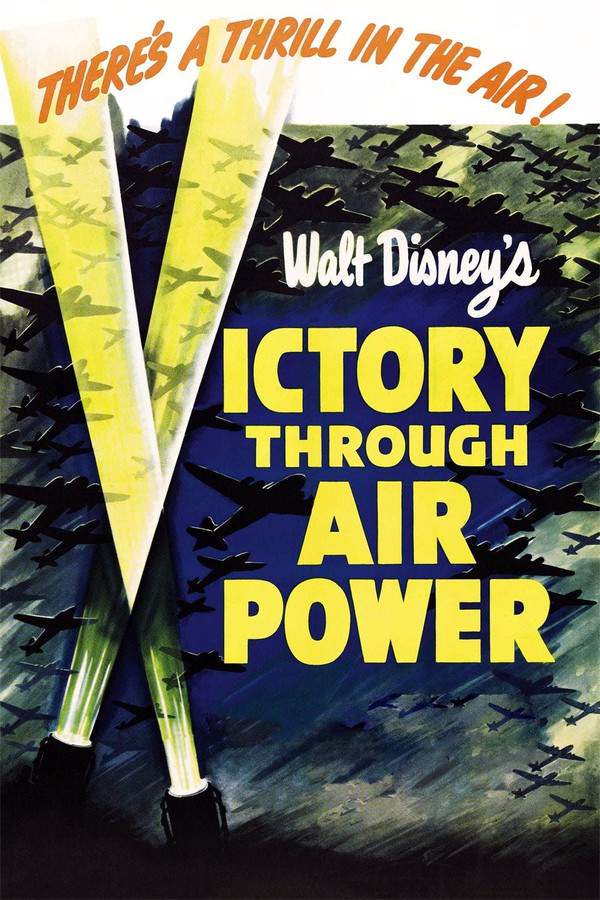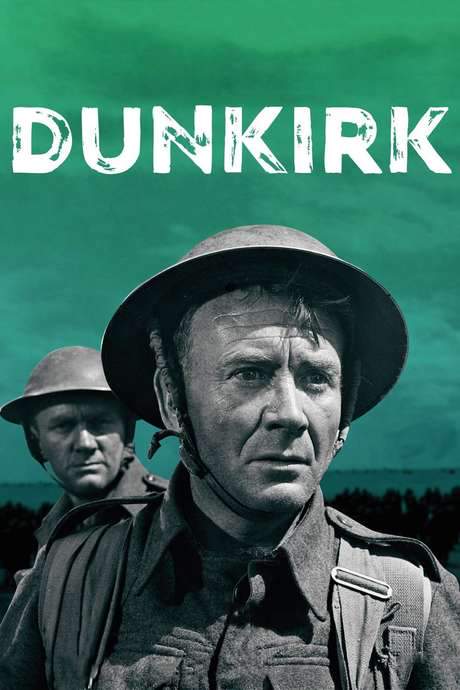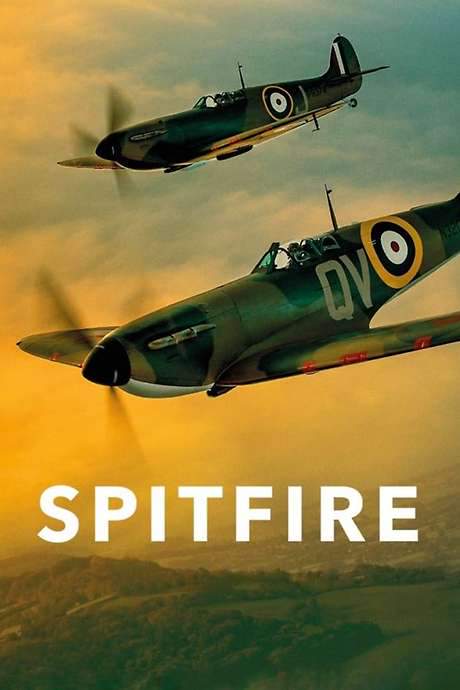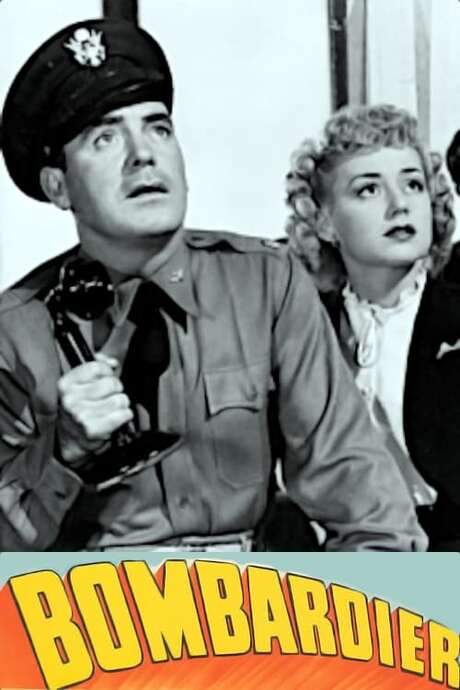
Victory Through Air Power
Year: 1943
Runtime: 70 min
Language: English
Directors: Jack Kinney, Clyde Geronimi, H.C. Potter, James Algar
This documentary explores the development of aerial warfare, using captivating animation to illustrate the crucial role of long-range strategic bombing in historical conflicts. It examines how air superiority significantly influenced the course of battles and shaped the outcome of wars, providing a fresh perspective on this powerful aspect of military history.
Warning: spoilers below!
Haven’t seen Victory Through Air Power yet? This summary contains major spoilers. Bookmark the page, watch the movie, and come back for the full breakdown. If you're ready, scroll on and relive the story!
Victory Through Air Power (1943) – Full Plot Summary & Ending Explained
Read the complete plot breakdown of Victory Through Air Power (1943), including all key story events, major twists, and the ending explained in detail. Discover what really happened—and what it all means.
This film stands out as a distinctive entry in Disney Production’s catalog, primarily serving as a propaganda piece that promotes Major Alexander De Seversky’s innovative theories regarding the practical applications of long-range strategic bombing. The movie artfully blends animated segments with humorous narratives to chronicle the evolution of aerial warfare, featuring Major De Seversky as he passionately advocates that his strategies could be pivotal in securing victory for the Allies.
The journey begins in 1919, when U.S. General Billy Mitchell urged the military to commit to developing a substantial air force. As World War II approached, various skirmishes highlighted air superiority’s critical role in enhancing ground forces’ effectiveness. It was a mere 16 years prior, on December 17, 1903, when Wilbur and Orville Wright achieved the first manned flight in a heavier-than-air machine at Kitty Hawk. By the year 1904, they had already mastered mid-air turns, showcasing the rapid advancement of aviation technology.
In 1908, the U.S. Army orchestrated plans for an Air Corps, aiming for a daring mission that included a pilot, a passenger, and a journey of ten miles without damage. Notably, in 1910, a French pilot became the first to fly across the English Channel, while the U.S. made its mark when Eugene Healy took to the skies from the USS Birmingham.
As the narrative unfolds, Rogers accomplished the first transcontinental flight in the early 1910s. However, with the advent of World War I in 1914, airplanes initially used for reconnaissance quickly evolved into tools of combat. Pilots began arming themselves and their aircraft, leading to the installation of machine guns and the development of a synchronization device that shielded the spinning propeller from harm.
In this turbulent era, grenades and bombs soon began raining down on vital military installations, and the rapid progression in aircraft technology was staggering, with over 20 years of development compressed into just four years of warfare. Following the war, aviators continued to break new ground, including Charles Lindbergh, who famously flew solo across the Atlantic from New York to Paris. Such feats culminated in an accelerated pace of military aviation, with U.S. army planes accomplishing global flights in a mere 15 days and 11 hours, a record later beaten by Howard Hughes, who reduced it to 2 days and 23 hours. The 1930s ushered in a new era of commercial airline services operating world-wide.
In the tumultuous year of 1939, with the onset of World War II, President Roosevelt commissioned the production of an astounding 50,000 airplanes. The rapid advancements in military aviation were unprecedented, enhancing capabilities from one mile per minute to an astonishing six miles per minute, and increasing firing rates from one bullet per minute to an incredible 9,600 bullets per minute.
A hallmark of this evolution is the B-19 bomber, revered for its near invulnerability to enemy fire and its ability to unleash profound destruction with its substantial bomb loads. Major Alexander De Seversky’s influence in shaping military aviation in America cannot be overstated. Originally from Russia and a graduate of the Soviet military academy, he found his place in the U.S. Navy air corps, but his journey took a dramatic turn when he lost a leg during World War I due to a plane crash at just 22 years old. After migrating to the U.S. in 1918, he became a citizen and served as an adviser to General Billy Mitchell once again, advocating for the air corps and leading innovative engineering initiatives.
De Seversky designed the very first fully automated bomb sight and pioneered various aircraft models, including metal amphibious planes and long-range bombers. His vision revolved around utilizing bombers to cripple the enemy’s war industries, decisively impacting their capacity to sustain conflict. Yet, military leaders of his time regarded airplanes merely as an auxiliary weapon, failing to grasp the transformative potential of aviation in warfare.
While countries invested heavily in outdated weaponry, the French constructed the seemingly indomitable Maginot Line, a series of fortifications intended for trench warfare. However, the Nazis swiftly circumvented this defense by deploying air power to advance their ground forces and seize control of France. The Maginot Line proved ineffective against this new aerial assault.
Moreover, the British attempted to blockade Hitler’s forces in Norway but were ruthlessly outmaneuvered by Nazi air power, forcing their once-mighty navy into hiding, protected only by the British land-based air forces. The successful evacuation of 300,000 British troops at Dunkirk was largely due to the valiant cover provided by the Royal Air Force in their struggle against Hitler’s Luftwaffe.
Hitler sought to replicate his success in Britain through an aerial invasion; however, he encountered robust resistance from the Royal Air Force and their Spitfire planes, which decimated 2,400 Nazi bombers, effectively thwarting his campaign. The German advance in the Mediterranean, driven by aerial assaults on the Greek island of Crete, demonstrated the effectiveness of air power once again.
The attack on Pearl Harbor served as a sobering lesson for the U.S. military, prompting a reevaluation of their strategies. Major De Seversky argued against merely emulating the enemy’s tactics, as it would necessitate tremendous resources, leading to inefficiencies. Instead, he emphasized the need for long-range bombers capable of directly targeting industrial hubs—an approach he strongly believed could change the tide of war.
He proposed a strategic model known as the “hub and spoke,” likening the war industry to a hub and supply lines to spokes. While the Allies had mostly focused on peripheral strikes against the spokes, it was crucial to attack the hub itself. This philosophy applied equally to the Pacific theater, where the vast challenges of launching successful operations necessitated the use of long-range bombers capable of reaching targets deep within enemy territory.
In essence, the deployment of 3,000-mile range bombers from Alaska could cripple Japanese industrial capabilities and open a path toward victory.
Last Updated: November 16, 2024 at 14:02
Explore Movie Threads
Discover curated groups of movies connected by mood, themes, and story style. Browse collections built around emotion, atmosphere, and narrative focus to easily find films that match what you feel like watching right now.
Urgent Persuasive Documentaries like Victory Through Air Power
Non-fiction films that argue a compelling point with high-stakes urgency.Movies like Victory Through Air Power that function as compelling arguments rather than neutral documentaries. These similar films blend history and advocacy, creating a tense and focused viewing experience centered on convincing the audience of a critical point.
Narrative Summary
These films typically begin by establishing a significant problem or threat, then systematically present historical evidence, expert testimony, and logical reasoning to build an unassailable case for a specific course of action. The narrative is driven by the force of the argument itself, building momentum towards a clear, often hopeful, conclusion.
Why These Movies?
Movies are grouped here based on their shared persuasive drive, urgent tone, and focus on presenting a strategic argument. The experience is defined by a sense of high stakes and intellectual engagement, where the primary goal is to convince the viewer.
Strategic Military Analysis Films like Victory Through Air Power
Stories that dissect the big-picture plans and doctrines of warfare.If you liked the strategic focus of Victory Through Air Power, explore these movies that similarly analyze military doctrine and technological innovation. These war stories prioritize the big picture of planning and logistics over frontline combat.
Narrative Summary
Narratives in this thread often follow the development and implementation of a new strategy or technology, examining its successes and failures through historical case studies or fictional scenarios. The conflict is intellectual and logistical, pitting different doctrines against each other to demonstrate their effectiveness.
Why These Movies?
These movies are united by their analytical approach to war, prioritizing strategic overviews, doctrinal debates, and the impact of technology. They share a sobering, focused mood and appeal to viewers interested in the mechanics of conflict rather than just its visceral drama.
Unlock the Full Story of Victory Through Air Power
Don't stop at just watching — explore Victory Through Air Power in full detail. From the complete plot summary and scene-by-scene timeline to character breakdowns, thematic analysis, and a deep dive into the ending — every page helps you truly understand what Victory Through Air Power is all about. Plus, discover what's next after the movie.
Victory Through Air Power Timeline
Track the full timeline of Victory Through Air Power with every major event arranged chronologically. Perfect for decoding non-linear storytelling, flashbacks, or parallel narratives with a clear scene-by-scene breakdown.

Characters, Settings & Themes in Victory Through Air Power
Discover the characters, locations, and core themes that shape Victory Through Air Power. Get insights into symbolic elements, setting significance, and deeper narrative meaning — ideal for thematic analysis and movie breakdowns.

Victory Through Air Power Spoiler-Free Summary
Get a quick, spoiler-free overview of Victory Through Air Power that covers the main plot points and key details without revealing any major twists or spoilers. Perfect for those who want to know what to expect before diving in.

More About Victory Through Air Power
Visit What's After the Movie to explore more about Victory Through Air Power: box office results, cast and crew info, production details, post-credit scenes, and external links — all in one place for movie fans and researchers.

Similar Movies to Victory Through Air Power
Discover movies like Victory Through Air Power that share similar genres, themes, and storytelling elements. Whether you’re drawn to the atmosphere, character arcs, or plot structure, these curated recommendations will help you explore more films you’ll love.
Explore More About Movie Victory Through Air Power
Victory Through Air Power (1943) Scene-by-Scene Movie Timeline
Victory Through Air Power (1943) Movie Characters, Themes & Settings
Victory Through Air Power (1943) Spoiler-Free Summary & Key Flow
Movies Like Victory Through Air Power – Similar Titles You’ll Enjoy
Spitfire (2018) Story Summary & Characters
Battle of Midway: The True Story (2019) Ending Explained & Film Insights
Heroes of the Sky: The Mighty Eighth Air Force (2020) Detailed Story Recap
WWII in Color: Road to Victory (1000) Story Summary & Characters
Heroes of the Sky: The Mighty Eighth Air Force (2020) Full Summary & Key Details
The Conquest of the Air (1931) Full Movie Breakdown
Victory at Sea (1954) Ending Explained & Film Insights
The Price of Victory (1942) Ending Explained & Film Insights
The Road to Victory (1944) Spoiler-Packed Plot Recap
Victory in the West (1941) Story Summary & Characters
Strange Victory (1948) Plot Summary & Ending Explained
The Lion Has Wings (1939) Full Summary & Key Details
Victory Vehicles (1943) Ending Explained & Film Insights
Bombardier (1943) Plot Summary & Ending Explained
Victory Quiz (1942) Spoiler-Packed Plot Recap











































